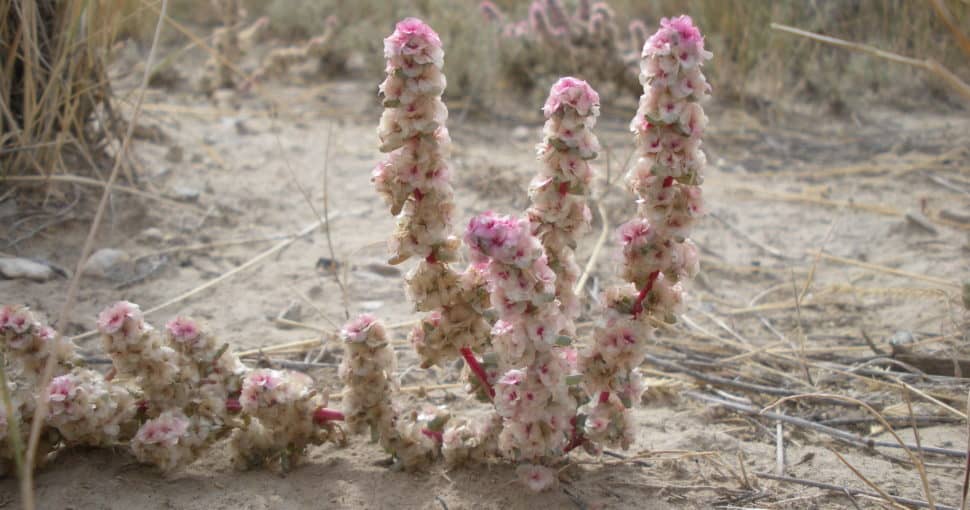Poisonous plants are more common than you might think. In fact, many of the plants that we see on a daily basis – such as tomatoes, potatoes, and daffodils – can be dangerous if ingested. While most cases of plant poisoning are relatively minor, some can be quite serious and even fatal. These are the ones you should be careful with in South Dakota.
Contents
- 1. Poison Hemlock (conium maculatum)
- 2. Halogeton (halogeton glomeratus)
- 3. Greasewood (sarcobatus)
- 4. Broom Snakeweed (gutierrezia sarothrae)
- 5. Buffalo Bur (solanum rostratum)
- 6. Jimsonweed (datura stramonium)
- 7. Canada Thistle (cirsium arvense)
- 8. Hoary Cress (lepidium draba)
- 9. Peegee Hydrangea (hydrangea paniculata)
- 10. Japanese Barberry (berberis thunbergii)
- 11. Blueleaf Honeysuckle (lonicera korolkowii)
- 12. Jackman Clematis (clematis x jackmanii)
- 13. Poison Ivy (toxicodendron radicans)
- 14. White Snakeroot (ageratina altissima)
- 15. Bittersweet/Woody Nightshade (solanum dulcamara)
- 16. Locoweed (oxytropis)
- 17. Castor Bean (ricinus communis)
- 18. Death Camas (toxicoscordion venenosum)
- 19. Wolf’s Bane/Monkshood (aconitum)
- 20. Baneberry (actaea rubra)
- 21. Sheep Sorrel (rumex acetosella)
- 22. Milkweed (asclepias)
- 23. Opium Poppy (papaver somniferum)
Symptoms of plant poisoning include gastrointestinal upset, skin irritation, and respiratory distress. Children and animals are especially vulnerable to the dangers of poisonous plants, as they are more likely to put things in their mouths.
If you suspect that someone has been poisoned by a plant, it is important to seek medical attention immediately. Even if the person does not seem to be exhibiting any symptoms, the effects of the poison may not be immediately apparent.
Did you know that there are poisonous plants in South Dakota? Probably not, because most people don’t think about the possibility of poison lurking in their backyard. But it’s true – there are quite a few dangerous plants scattered throughout our state, and if you’re not careful, you could easily find yourself in serious trouble.
So today, we’re going to take a look at 23 poisonous plants in South Dakota and learn how to avoid them. Stay safe out there!
1. Poison Hemlock (conium maculatum)
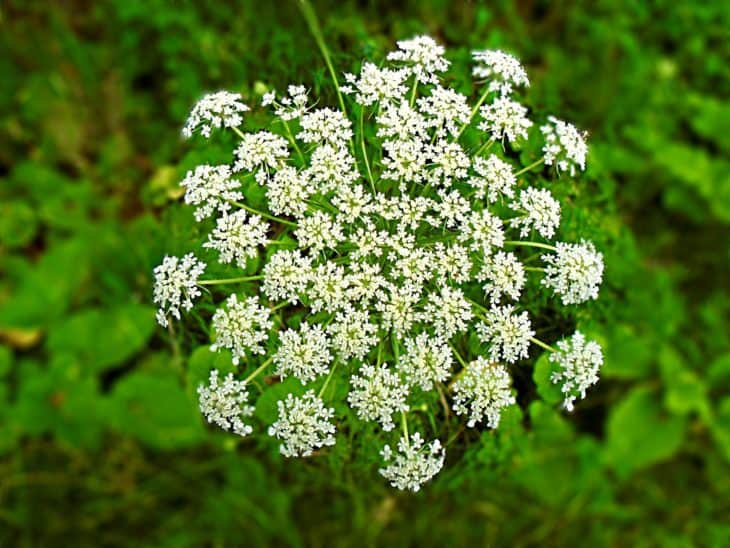
Poison hemlock is a tall, slender plant that can be found growing in fields, along roadsides, and in other disturbed habitats. All parts of the plant are poisonous, and ingestion can lead to serious health problems or even death. Poison hemlock is often confused with other plants. However, it can be distinguished by its purple-spotted stem and its strong scent of parsley.
2. Halogeton (halogeton glomeratus)
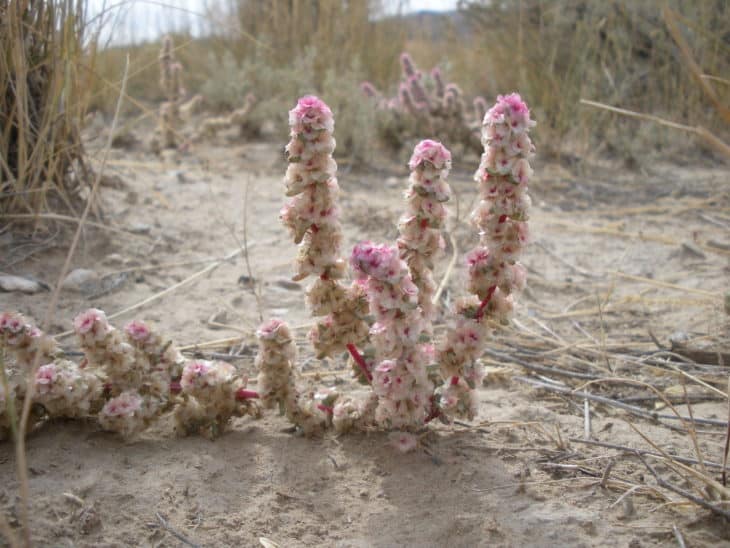
This plant was introduced to the United States in the 1930s as a forage crop for livestock, and was soon discovered to be poisonous to animals. Halogeton contains high levels of salt, which can cause dehydration and death in animals that eat large quantities of the plant. It is also very difficult to control, as it can quickly spread across vast areas of land.
3. Greasewood (sarcobatus)
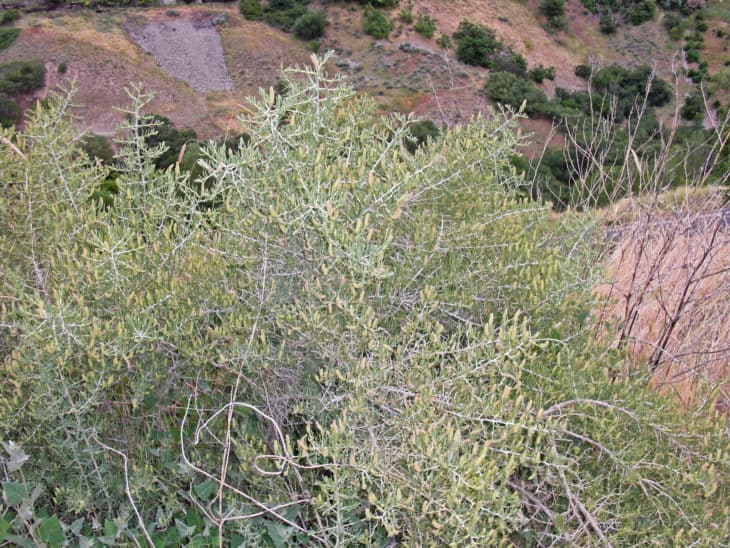
Greasewood, also known as creosote bush can also be poisonous to humans and animals if ingested. The plant contains a chemical called nordihydroguaiaretic acid, which can cause liver damage, kidney failure, and even death. Symptoms of poisoning include vomiting, diarrhea, and abdominal pain. Therefore, it is important to be aware of the risks before handling or consuming any part of the plant.
4. Broom Snakeweed (gutierrezia sarothrae)
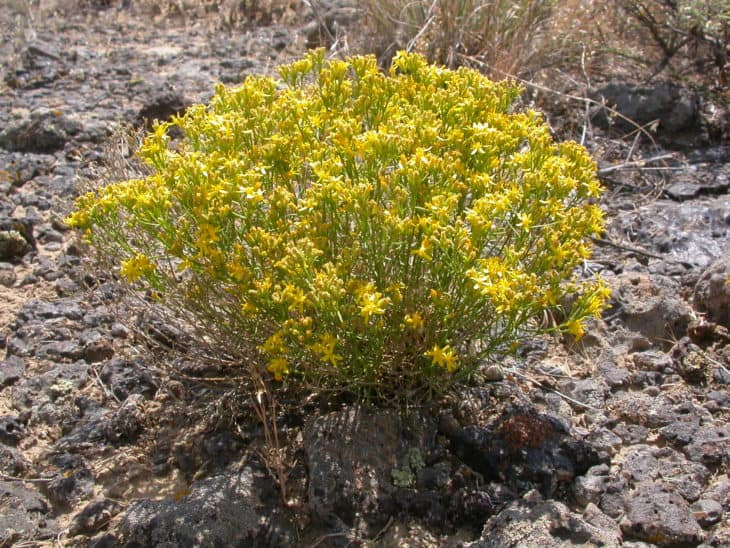
The Broom Snakeweed has small, yellow flowers that resemble a broom and is also sometimes called the Matchweed, due to the fact that its dried leaves can be used as kindling. While the Broom Snakeweed may have some usefulness, it is also poisonous to cattle and other animals. The poison works by causing dehydration and electrolyte imbalance, which can lead to death if not treated quickly.
5. Buffalo Bur (solanum rostratum)
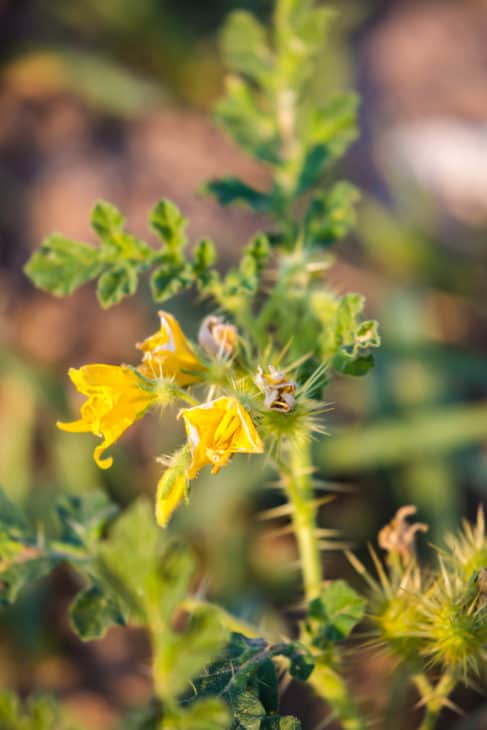
The poisonous buffalo bur (Solanum rostratum) is a herbaceous annual plant that is native to North America. The plant gets its common name from its large, Bur-like fruits, which are covered in sharp spines. These fruits are poisonous to humans and animals, and can cause nausea, vomiting, and diarrhea if ingested. The plant also has sharp spines on its leaves and stem, which can cause skin irritation.
6. Jimsonweed (datura stramonium)
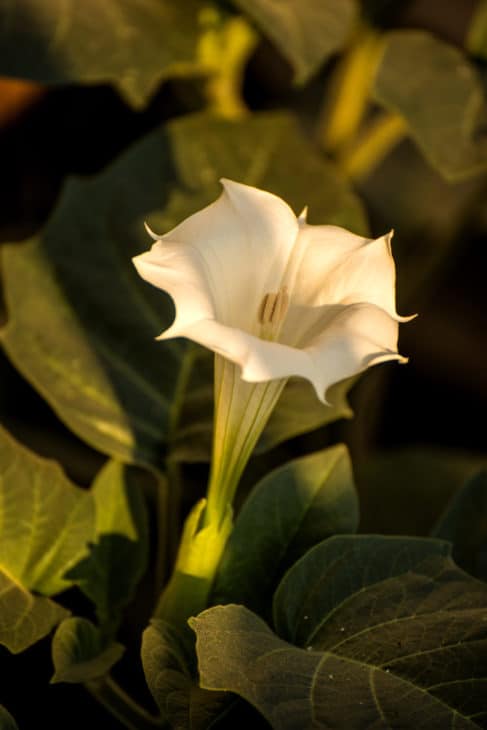
imsonweed is a tall, spindly plant with large, white or purple trumpet-shaped flowers. All parts of the plant are poisonous, and ingesting even a small amount can be deadly. Symptoms of jimsonweed poisoning include delirium, hallucinations, coma, and death. The poison works by blocking the neurotransmitters that regulate heart rate and blood pressure.
7. Canada Thistle (cirsium arvense)
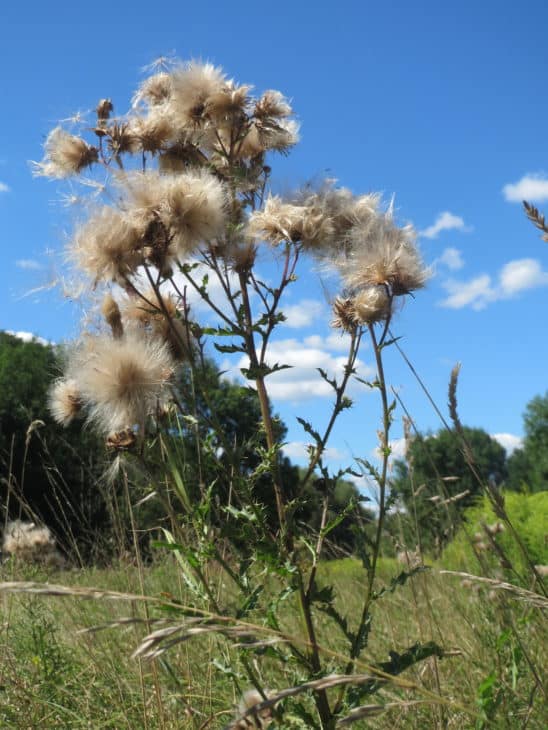
This noxious weed is poisonous to both humans and animals, and it spreads rapidly through its long, creeping roots. Canada thistles can grow up to five feet tall, and their spiny leaves make them difficult to remove by hand. Even mowing or tilling the ground can spread the plant’s roots, making control measures very difficult. In order to prevent the spread of this weed, it is important to remove Canada thistles before they go to seed.
8. Hoary Cress (lepidium draba)
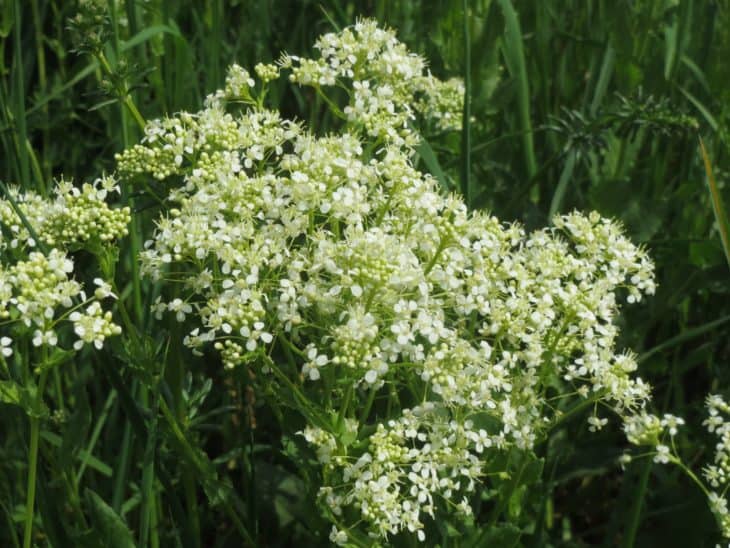
Hoary cress is an annual plant, meaning it completes its life cycle in one growing season. The flowers are small and white, and the plant has long, slender leaves. This plant is considered poisonous if ingested in large quantities. The symptoms of poisoning include stomach pain, vomiting, and diarrhea. In severe cases, hoary cress can cause convulsions and even death.
9. Peegee Hydrangea (hydrangea paniculata)
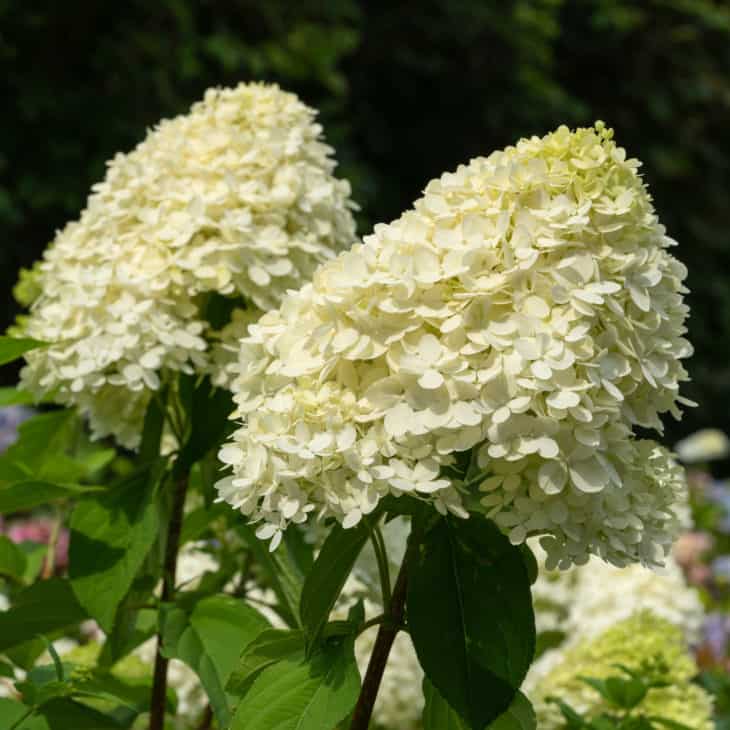
Peegee Hydrangea are a beautiful shurb, extremely popular with gardeners, but what many people don’t realize is that the peegee hydrangea is actually poisonous. All parts of the plant contain toxic chemicals that can cause nausea, vomiting, and diarrhea if ingested. In severe cases, eating the leaves or flowers of the peegee hydrangea can lead to kidney damage or even death
10. Japanese Barberry (berberis thunbergii)
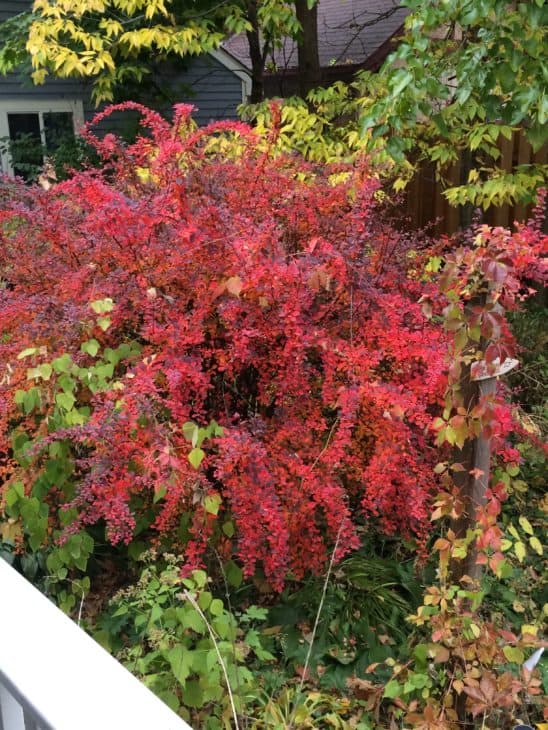
Japanese barberry is an invasive shrub that is poisonous to humans and animals. The plant contains small amounts of berberine, which is a toxic alkaloid. Symptoms of berberine poisoning include vomiting, diarrhea, and seizures. In severe cases, it can lead to liver failure or death. Because of its toxicity, the Japanese barberry should be removed from any property where it is growing.
11. Blueleaf Honeysuckle (lonicera korolkowii)
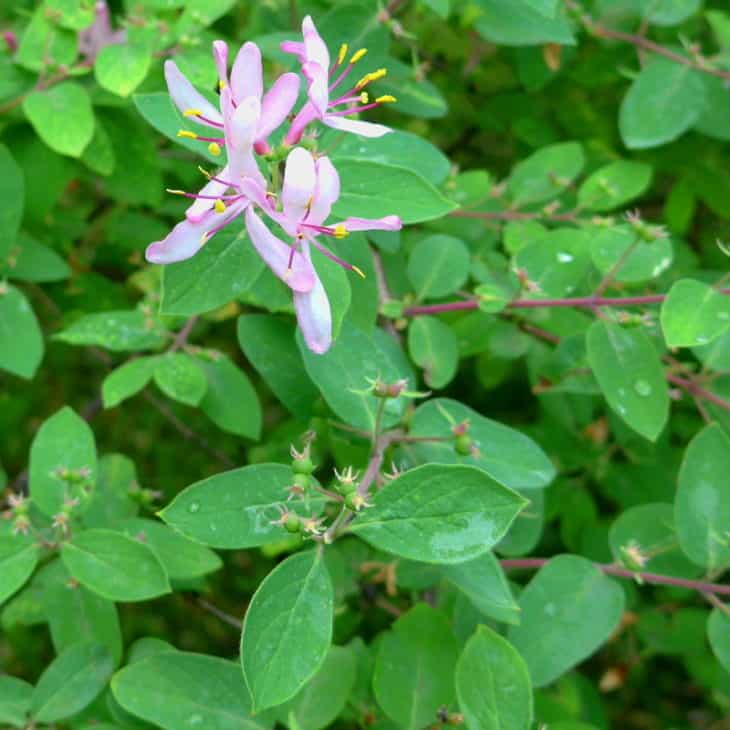
The Blueleaf Honeysuckle has blue or purple flowers, and it produces tasty berries that are enjoyed by birds. However, the berries of the Blueleaf Honeysuckle are poisonous to humans. If ingested, they can cause nausea, vomiting, and diarrhea. In severe cases, they can also lead to coma and death. As a result, it is important to keep children and pets away from this plant.
12. Jackman Clematis (clematis x jackmanii)
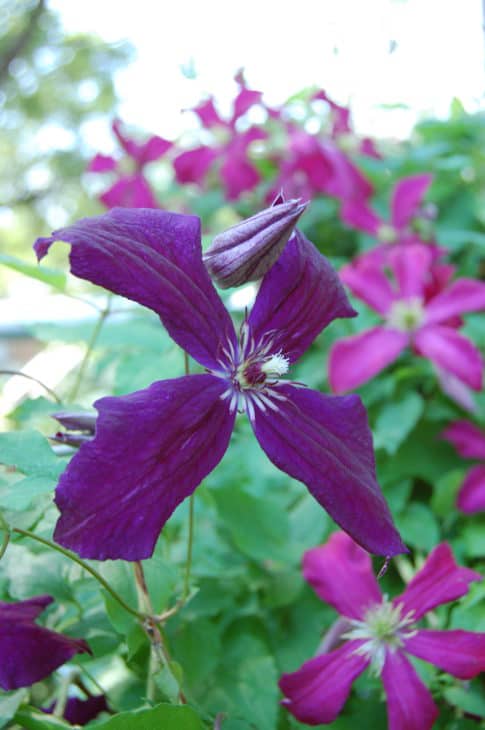
This plant has beautiful flowers but that’s not all it’s known for; it is also notorious for being poisonous. The entire plant is covered in a white, waxy substance that contains toxic compounds. If ingested, these toxins can cause vomiting, diarrhea, and skin irritation. In severe cases, they can even lead to coma or death. Although the Jackman clematis is a beautiful plant, it is important to be cautious around it, especially if you have young children or pets.
13. Poison Ivy (toxicodendron radicans)
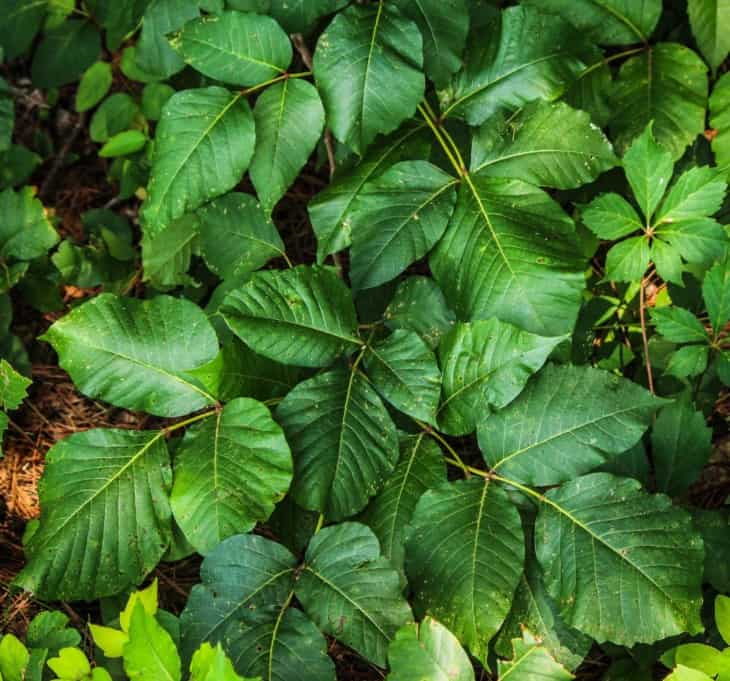
Many people are familiar with poison ivy, but few know how to identify it. Poison ivy is a plant that grows in many areas of the United States. It has three leaves that are pointy at the end and shiny. The plant can grow as a vine or a bush. If you come into contact with poison ivy, you will get an itchy rash.
14. White Snakeroot (ageratina altissima)
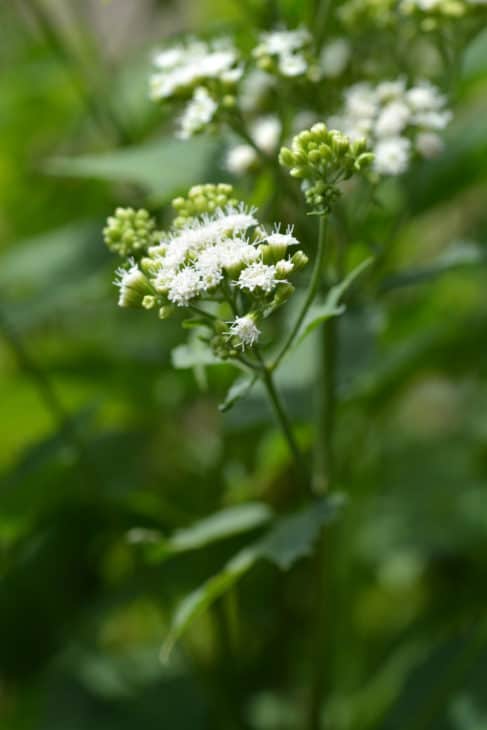
While the plant with its long white flowers is pretty to look at, it is also very poisonous. White snakeroot contains a toxin called tremetol, which can be deadly to humans and animals if consumed in large quantities. The toxin is passed through the milk of cows that graze on the plant, and it was responsible for the death of Abraham Lincoln’s mother.
15. Bittersweet/Woody Nightshade (solanum dulcamara)
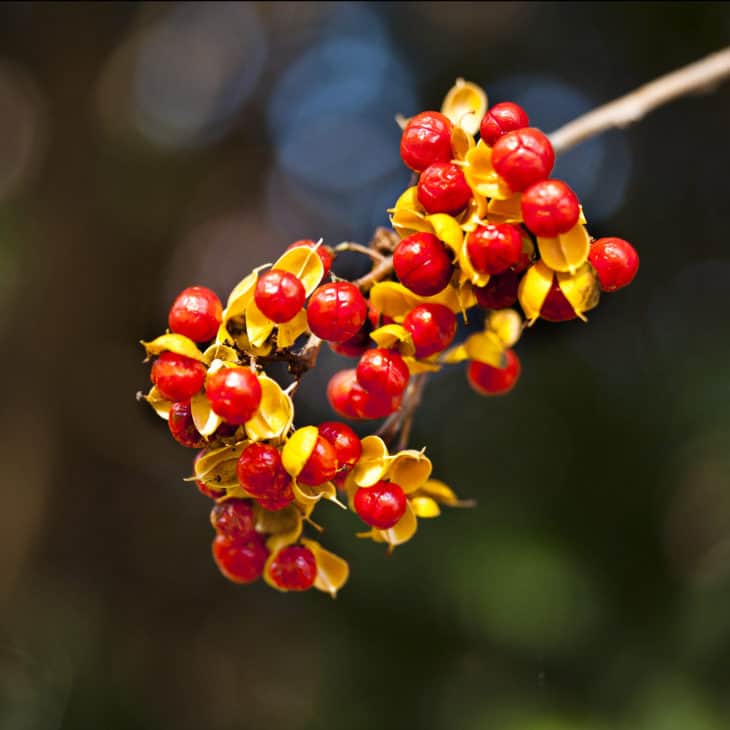
The poisonous woody nightshade is a widespread and common plant that is often found in gardens, along roadsides, and in other disturbed habitats. All parts of the plant are poisonous, but the berries are the most toxic. The poison found in the berries is solanine, which can cause stomach cramps, vomiting, and diarrhea if ingested. In severe cases, it can lead to convulsions, coma, and even death.
16. Locoweed (oxytropis)
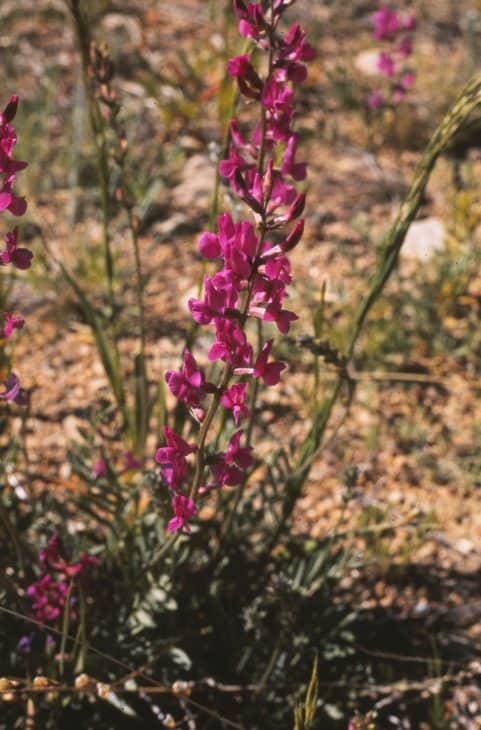
Locoweed is a type of weed that can be found in many parts of the United States. While it may not look like much, this plant can be quite dangerous to both humans and animals. The Locoweed plant contains a toxin known as lupinine, which can cause nausea, vomiting and even seizures in large doses. While there is no cure for locoweed poisoning, it is important to seek medical attention as soon as possible.
17. Castor Bean (ricinus communis)
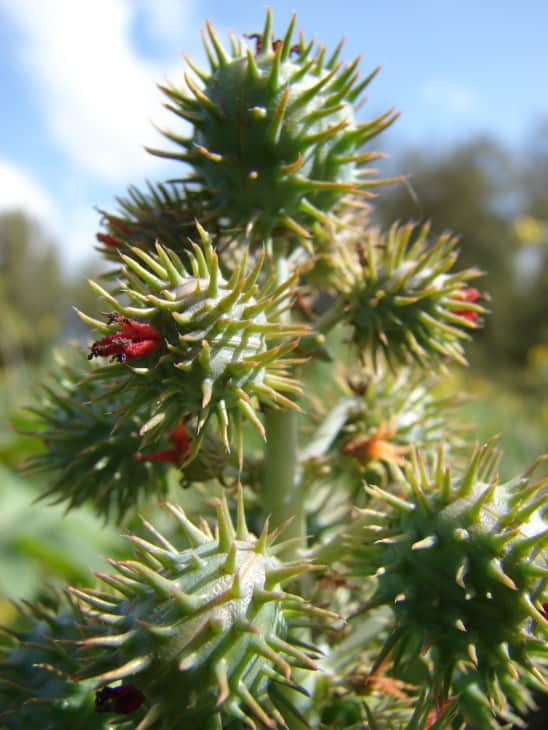
The leaves are large and lobed, and the flowers are clustered together in small groups. The plant produces a bean-like fruit that contains a single seed. These seeds are poisonous and can cause severe illness if ingested. According to the National Capital Poison Center, castor bean poisoning can cause nausea, vomiting, diarrhea, abdominal pain, and severe dehydration. In severe cases, it can lead to coma and death.
18. Death Camas (toxicoscordion venenosum)
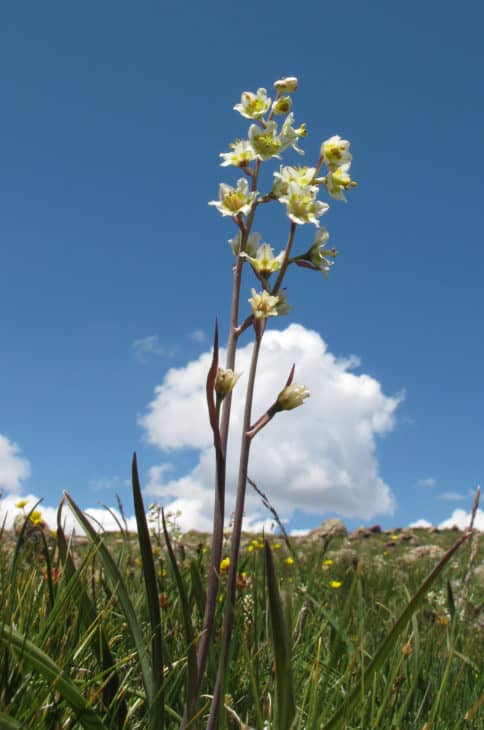
Death camas gets its name from the fact that it is highly toxic, and ingesting even a small amount can be fatal. All parts of the plant are poisonous, but the bulbs are the most dangerous as they contain the highest concentration of toxins. Symptoms of death camas poisoning include nausea, vomiting, diarrhea, and abdominal pain. If left untreated, death camas poisoning can lead to seizures, coma, and death.
19. Wolf’s Bane/Monkshood (aconitum)
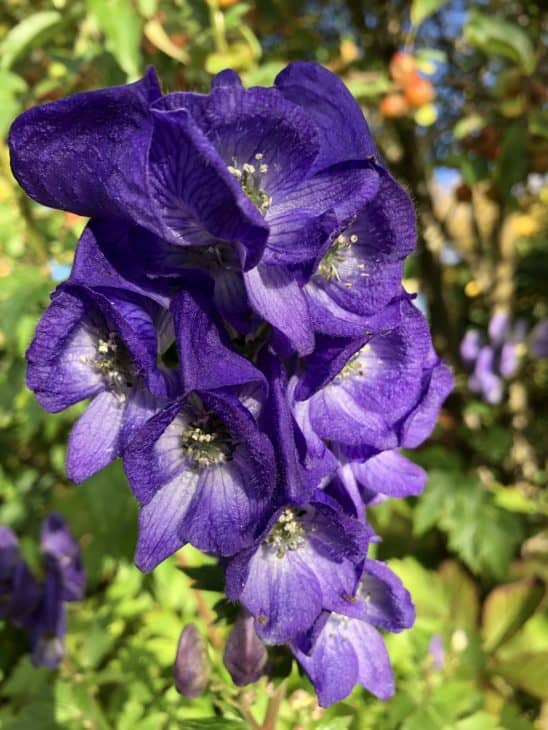
Wolf’s bane is a beautiful but deadly plant. It has large, dark green leaves and lovely purple or white flowers. The plant gets its name from an old superstition that it could be used to kill wolves. In fact, all parts of the plant are poisonous. If ingested, wolf’s bane can cause nausea, vomiting, and seizures. It can also be fatal if not treated promptly.
20. Baneberry (actaea rubra)
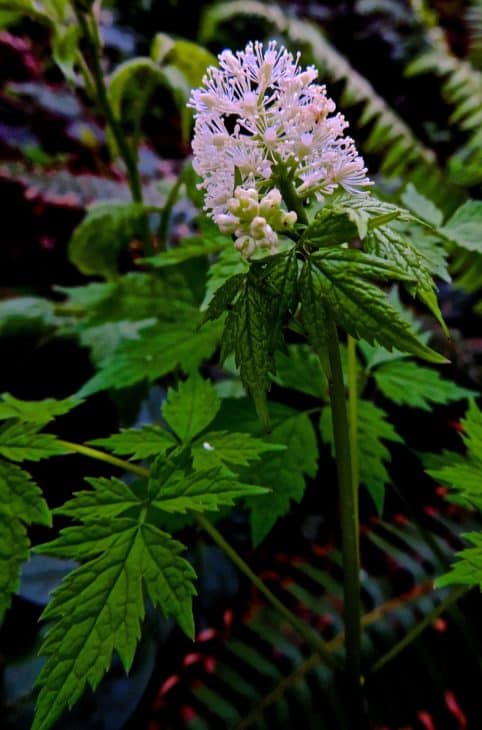
The shrub has glossy green leaves and clusters of white or pale pink berries. All parts of the plant are poisonous, and eating even a small quantity of the berries can cause serious health problems. The poison affects the digestive system, causing vomiting and diarrhea. In severe cases, it can lead to convulsions and death. Thankfully, the berries are not especially attractive to humans, and they are usually only eaten by mistake.
21. Sheep Sorrel (rumex acetosella)
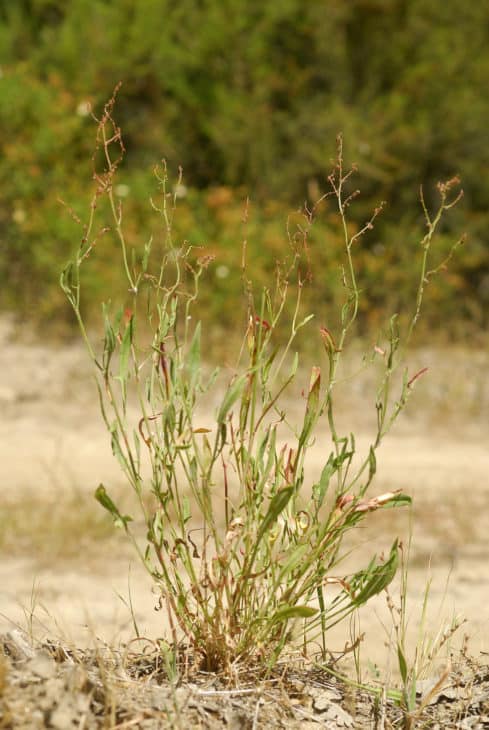
Sheep sorrel (Rumex acetosella) is a common weed found in pastures, gardens, and waste areas. Although it is not particularly harmful to humans or animals, sheep sorrel can be poisonous to some livestock. The toxic compounds in the plant can cause digestive problems, including vomiting and diarrhea. Sheep that consume large quantities of sheep sorrel may also experience difficulty breathing and seizures
22. Milkweed (asclepias)
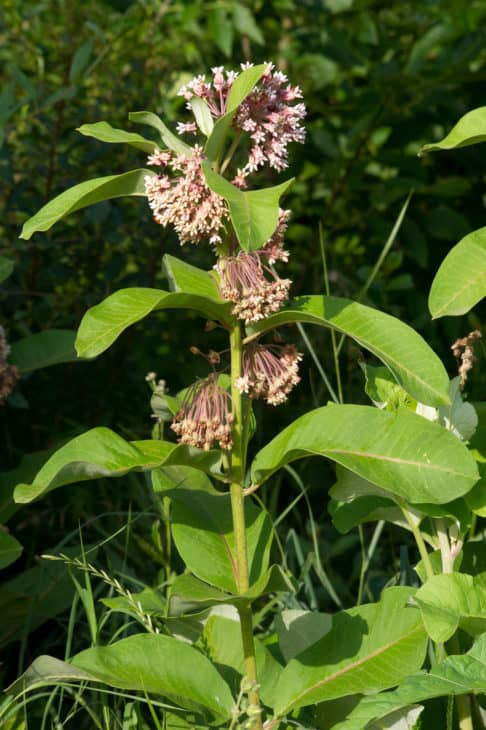
Poisonous milkweed (Asclepias syriaca) is a perennial plant that can be found in fields and along roadsides throughout the United States. The plant gets its name from the milky sap that is found in its leaves and stems. This sap contains a variety of toxins, including cardiac glycosides, which can cause vomiting, diarrhea, and heart problems if ingested. While the plant is poisonous to humans and animals, it is an important food source for monarch butterflies.
Related: 8 Plants That Look Like Milkweed
23. Opium Poppy (papaver somniferum)
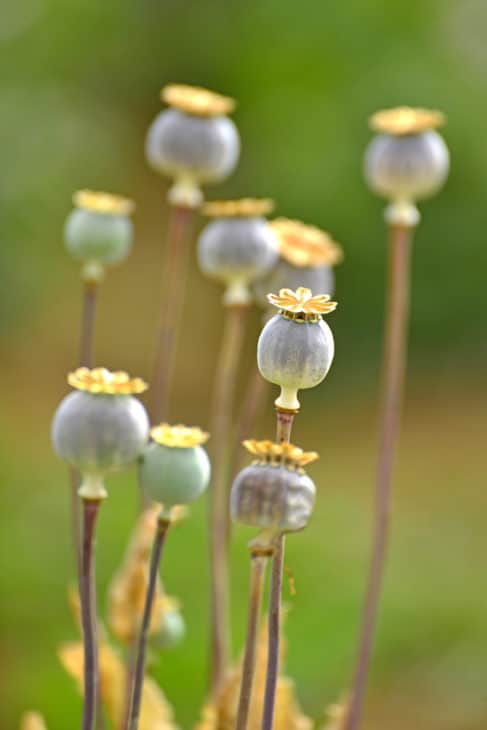
These plants carry substances that have powerful analgesic effects, which has made the opium poppy a popular choice for treating pain. However, the plant also has a dark side. In large doses, the alkaloids in opium poppy can be toxic, causing respiratory depression and even death. For this reason, it is important to be cautious when handling the plant or using products that contain its extract.

